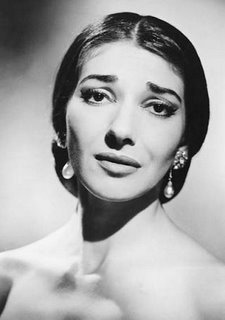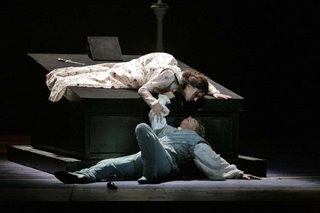More arts groups will join the trend to show arts productions at the cinema in light of the Metropolitan Opera's successful Live in HD, as we reported in this blog
last week. The San Francisco Opera announced yesterday that they will be showing 6 pre-recorded High Definition operas from March to November 2008 in a four-year agreement with The Bigger Picture, a subsidiary of Access Integrated Technologies, Inc. See their
press release (PDF format).
According to an
article in the New York Times,
San Francisco Opera officials said they would use the digital format increasingly chosen for Hollywood feature films, pointing out that the Met mainly uses projection systems used for advertising in movie theaters.
In publicity materials the San Francisco Opera said, "the quality is clearly better on digital-cinema-quality projectors," compared with the Met's broadcasts, but otherwise deferred comments on the issue to Jonathan Dern, a co-president of the Bigger Picture.
"It looks better, it sounds better and it is the standard for digital cinema," Mr. Dern said. The operas are expected to begin in all of the 50 leading markets, he said.
But the Met and San Francisco differ in one crucial area: The Met shows its operas live. San Francisco will transmit them after the fact.
"Being live is at the heart of our approach because we're creating basically satellite opera houses," said Peter Gelb, the Met's general manager. "That's what makes this more than a canned experience." Mr. Gelb also said the Met had gone into movie theaters before the Digital Cinema technology began spreading.
Showing operas at the cinema can be quite lucrative. Last Saturday's Met Opera: Live in HD of Gounod's Roméo et Juilette (the first of their 2nd season) reached 97,000 viewers and took in $1.65 million according to the company's blog. The question is whether San Francisco Opera and also Opus Arte's approach of presenting edited pre-recorded opera with a better picture quality can match this kind of turn out. The Met at the Movies has the advantage of being live events and benefit from free PR from the associated buzz, and as we hypothesized in our earlier blog entry, it's going to take some marketing effort to match the Met.
San Francisco Opera's 2008 lineup, with their own star-studded cast, are productions from the Summer and Fall 2007 season:
- Giacomo Puccini - La Rondine
- Camille Saint-Saëns - Samson and Delilah
- Wolfgang Amadeus Mozart - The Magic Flute
- Wolfgang Amadeus Mozart - Don Giovanni
- Philip Glass/Christopher Hampton - Appomattox
- Giacomo Puccini - Madama Butterfly
Addendum: Meanwhile, The Globe and Mail
reports that La Scala will also be getting into the act with their own 6-opera HD broadcast season, which will but available in North America only in the US. The series has already started in December 2007 with
Aïda. The others are:
- Tristan und Isolde (January 2008)
- La Traviata (February 2008)
- Maria Stuarda (March 2008)
- La Forza del destino (April 2008)
- Il Trittico (May 2008)
See the
Emerging Pictures website for the list of participating theatres and cast info.
Labels: HD, Metropolitan Opera, opera
 The January 2008 issue of Chatelaine features a cover interview/profile of Canadian soprano Measha Brueggergosman who reveals details about her incredible weight lost of over 150 pounds over the last two years. Wrote Danielle Groen:
The January 2008 issue of Chatelaine features a cover interview/profile of Canadian soprano Measha Brueggergosman who reveals details about her incredible weight lost of over 150 pounds over the last two years. Wrote Danielle Groen:




